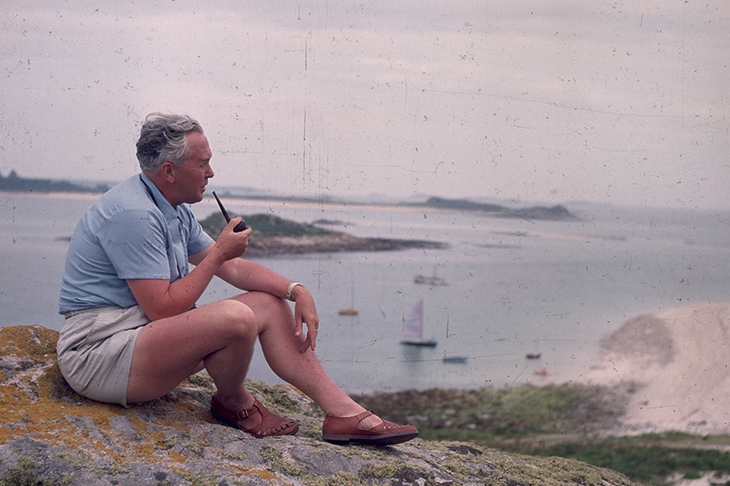‘You can get away from everything,’ said Harold Wilson of the Isles of Scilly, ‘not only in distance but also in time’. During recess, Wilson would frequently catch the sleeper from Paddington to Penzance before making the notoriously choppy crossing to Britain’s most westerly archipelago. There he would unwind in his cottage on St Mary’s — a place where the red box could not easily follow.
This family of five islands 28 miles off the nose of Land’s End has always enjoyed a somewhat secretive coterie of admirers — Jude Law and Michael Morpurgo to name but two. Deserted beaches with a Caribbean colour palette are surely part of the draw, as are hedgerows festooned with wild garlic, pink bells and exotic aeoniums. The near subtropical climate is a botanist’s paradise: there is nowhere warmer or more fertile on the British Isles.
It’s no wonder, then, that the islanders are fiercely protective of St Mary’s and the so-called ‘off-islands’ that surround it. An islander is considered a Scillonian only if their grandparents were born and raised here.
Scillonians forged their strong seafaring heritage in the perilous Atlantic waters beyond the archipelago’s northern rocks. As soon as they caught sight of a ship on the horizon, the islanders would race out to it in boats called gigs in order to earn the chance to pilot it to safety. The stakes were high. A hefty fee would be paid to the crew who reached the ship first — often enough to feed their families for a year.
Many a ship has been caught off-guard by these unpredictable seas. More than 1,300 men were lost in 1707 in one of the worst disasters in British maritime history when a Royal Navy fleet misjudged its route into the English Channel from Gibraltar and met its end on the edge of St Agnes.









Comments
Join the debate for just £1 a month
Be part of the conversation with other Spectator readers by getting your first three months for £3.
UNLOCK ACCESS Just £1 a monthAlready a subscriber? Log in